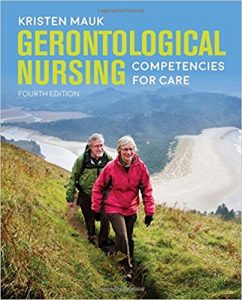Commonly known as shingles, herpes zoster is the reactivation of the varicella virus that causes chicken pox. Older persons may be infected with this latent virus after initial exposure to it in the form of chicken pox. The virus then lays dormant in the neurons until it is reactivated, often due to immunosuppression, when it appears in the form of painful vesicles or blisters along the sensory nerves. This reactivation tends to occur once in a lifetime, with repeat attacks occurring about 5% of the time (Flossos & Kostakou, 2006). Herpes zoster occurs in both men and women equally, with no specific ethnic variations, but is more common in the elderly.
Risk Factors
Risk factors for developing shingles are age over 55 years, stress, and a suppressed immune system. For many older women particularly, emotional or psychological stress can trigger recurrence.
Warning Signs
Signs and symptoms of herpes zoster include painful lesions that erupt on the sensory nerve path, usually beginning on the chest or face. They may appear as initially as a rash, looking much like chicken pox, often wrapping around the chest area in a band-like cluster. These weepy vesicles get pustular and crusty over several days, with healing occurring in 2-5 weeks (Kennedy-Malone et al., 2004; NINDS, 2013).
Diagnosis
Diagnosis is usually made by viewing the appearance of the lesions and a history of onset. A scraping will confirm some type of herpes virus. The most common complaint of those with herpes zoster is the painful blisters that usually subside in 3–5 weeks (NINDS, 2013). Postherpetic neuralgia, a complication of herpes zoster, may last 6–12 months after the lesions disappear and may involve the dermatome, thermal sensory deficits, allodynia (the perception of pain where pain should not be), and/or severe sensory loss, all of which can be very distressing for the patient (Flossos & Kostakou, 2006).
Prevention
Zostavax, a vaccine for shingles, has become available, and it is recommended for all persons age 60 or older who have already had the chicken pox. A person can still get shingles even after having the vaccine, but the symptoms and complications would be less severe. The vaccine has also been approved for persons age 50 – 59, and research has shown that receiving the vaccine significantly decreases the rate of shingles in the population (NINDS, 2013; PubMed Health 2012).
Treatment
Antiviral medications (such as Acyclovir) are used to treat shingles, but must be given within 48 hours of the eruption of the lesions. Topical ointments may help with pain and itching. Pain medications, particularly acetaminophen (Tylenol), are appropriate for pain management in older adults. If a fever is present, rest and drinking plenty of fluids is suggested. Persons with pain that lasts past 6 weeks after the skin lesions are gone and that is described as sharp, burning, or constant require re-evaluation by a physician. Postherpetic neuralgia may be a long-term complication lasting years (PubMed Health, 2012).
The person should be advised to seek medical attention as soon as he or she suspects shingles, in order to receive the best results from Acyclovir. The virus will run its course, but the person is contagious while vesicles are weepy. Persons should not have direct contact (even clothing) with pregnant women, people who have not had chicken pox, other elderly persons, or those with suppressed immune systems. The older person with shingles may experience concerns with pain management and feel a sense of isolation, particularly if they live alone. Arranging for a family member or friend who does not have a high risk of infection to check on the older person at home is advisable.
Adapted from Mauk, K. L., Hanson, P., & Hain, D. (2014). Review of the management of common illnesses, diseases, or health conditions. In K. L. Mauk’s (Ed.) Gerontological Nursing: Competencies for Care. Sudbury, MA: Jones and Bartlett Publishers. Used with permission.

